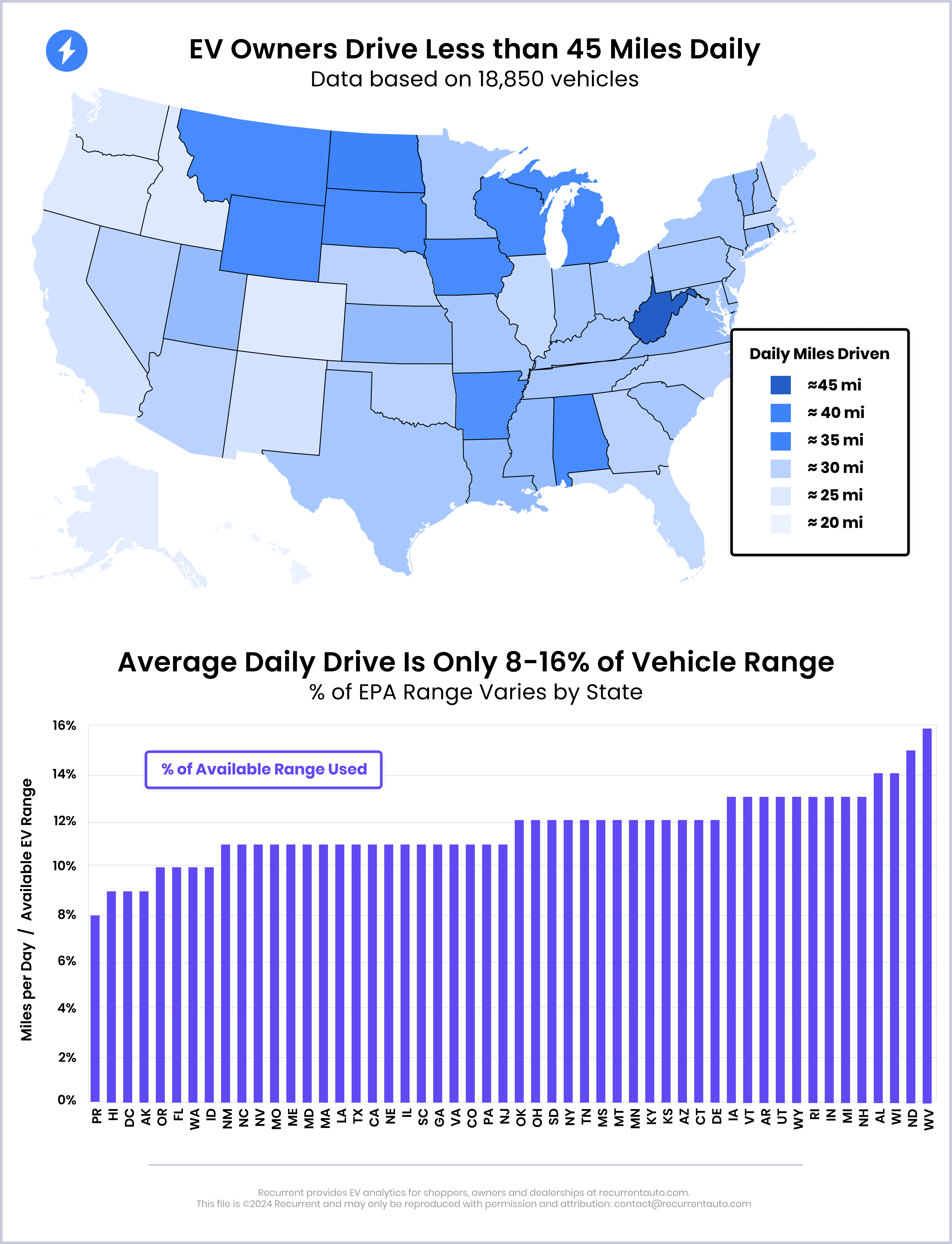Range anxiety is the fear that an electric vehicle will run out of battery before reaching its destination. It's a common mental barrier for perspective EV owners and a lingering pang for current EV owners.
Data from this study suggests that range anxiety need not be a concern for the average daily drive. Commutes, errand runs, and even the occasional road trip fall well within the capabilities of most modern EVs, which often boast ranges exceeding 250 miles on a single charge.
This infographic summarizes analysis of over 18,000 electric vehicles in the US across all 50 states. The top map illustrates how far EV owners drive each day on average. Depending on the state, it ranges from about 20 miles to about 45 miles. The bottom chart compares that daily range to the available range of the vehicle. Average daily EV drives make up only 8% to 16% of the average rated EPA range per state.

The underlying data for these visuals is available in this table.
State-by-state EV Range Analysis
- Islands and small districts like Puerto Rico, Hawaii and Washington DC have shorter daily driving distances and typically use less of their vehicle's available range.
- Although Alaska is large, it is also on the low end for daily driving distance and range usage. This could be due to small metro sizes, short drives, and limited road mileage. Famously, the state has "more miles of hiking trails than it does miles of roads for passenger vehicles." You can't even reach the the state capital, Juneau, by car!
- Trends are visible around population density. Wyoming, Montana and the Dakotas are 4 of the 5 least dense states.
- Alaska, Texas and California are the 3 geographically largest states and all have below average daily driving distances. This may reflect the fact that most EV owners live in urban areas, which have lower daily mileage for all drivers, or that EV drivers in these states have access to other vehicles for longer trips.
Range Lessons for EV Drivers
It's evident that most EV drivers do not need to be concerned about range during their daily driving, something that the Recurrent team also learned in this driver survey. It's worth noting, too, that these charts use median figures to avoid bias from outliers in the data.
Since this study is published in February, it's also compelling that these daily driving distances would not be noticeably impacted by cold weather, which can reduce EV range by 29% on average. The same would be true of summer EV range.
More Insights on EV Range from Battery Scientists
The team of battery science PhDs at Recurrent published a range and degradation guide for new EV drivers. It's free to download.




